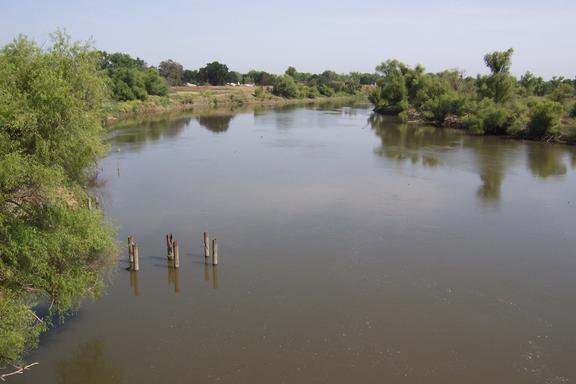Water releases designed to benefit the critical outmigration of juvenile salmon on the Stanislaus River as well as assist farms and communities along the west side of the San Joaquin Valley already starting to suffer the effects of two consecutive dry years is languishing in the federal bureaucracy.
Up to 100,000 acre feet is proposed to be released that belongs to the South San Joaquin and Oakdale irrigation districts that would provide a critical impulse flow from April 15 to May 15.
That water based on measurements at Vernalis south of Manteca where the Stanislaus River joins the San Joaquin River would significantly improve the survivability of the threatened salmon.
The release would also end up transferring that water after it assists with juvenile salmon migration to the San Luis & Delta-Mendota Water Authority and the State Water Contractors.
The two districts have agreed to sell the water to those agencies at $250 an acre foot or roughly at a quarter of the current going spot market price water users are paying as they scramble to secure water as California slips closer to a full scale drought emergency.
The proposal was submitted three weeks ago to the federal Departments of Interior and Commerce for evaluation pursuant to the 2016 Water Infrastructure Improvements for the Nation (WIIN) Act. A follow-up request was sent by SSJID General Manager Peter Rietkerk last week.
To date, there has been no response from federal officials despite the sensitivity of the timing of the additional flows, which would begin in two weeks.
Due to below-average hydrology, flows this spring at Vernalis near the confluence of the San Joaquin and Stanislaus rivers are projected to be 50% of what is required by State Water Board Decision D-1641 to provide protection to outmigrating juvenile salmon in the Stanislaus River. The dry hydrology also has resulted in suspended water allocations to federal agricultural water service contractors by the U.S. Bureau of Reclamation and only 5% allocations to the State Water Contractors by the California Department of Water Resources, reduced from 10% earlier this year.
For fisheries, D-1641 pulse flow requirements are required to be an average of 3,140 cubic feet per second (cfs) between April 15 and May 15. However, based on current planned water releases, flows are projected to be less than 1,500 cfs during those 31 days. The proposed releases by OID and SSJID from their shared water rights could produce nearly 3,000 cfs at Vernalis and provide up to 100,000 acre-feet of water to farmers and communities in the San Joaquin Valley. (
“The Districts are fortunate to have been able to make these releases in the past — to generate revenue to build projects that allow us to conserve water — so that in tough times like these we can help those farmers who have helped us develop that conserved water,” said OID General Manager Steve Knell.
The pulse flow releases are consistent with the Districts’ long-term policies in support of fisheries in the Stanislaus River.
“With California water being as contentious as ever, this proposal illustrates the art of the possible for collaborative water management that supports both the environmental and human water supply needs,” said Rietkerk.
The water made available under the release would not resolve the shortage in state and federal allocations this year, but nonetheless would be critical for San Joaquin Valley farmers and communities.
To contact Dennis Wyatt, email dwyatt@mnantecabulletin.com





